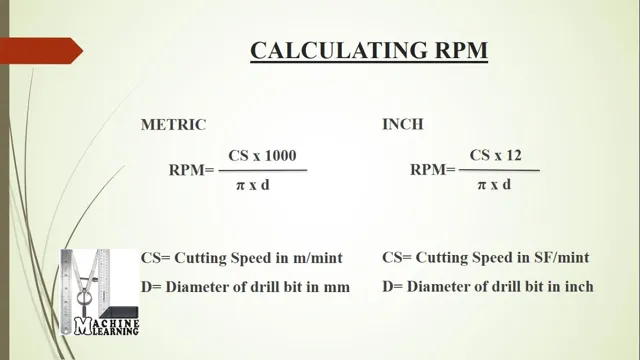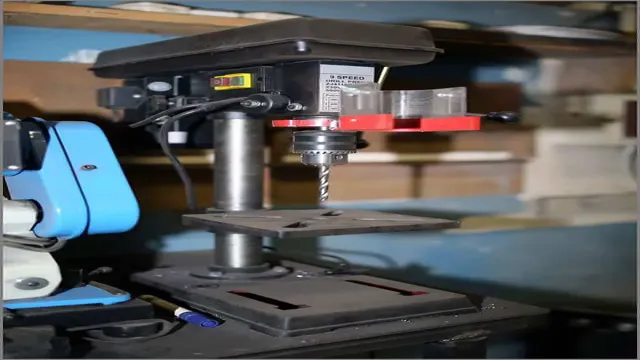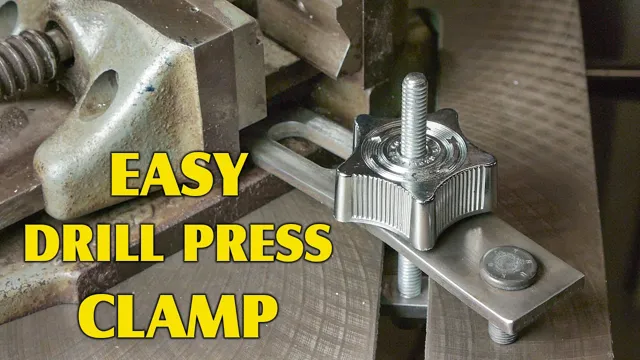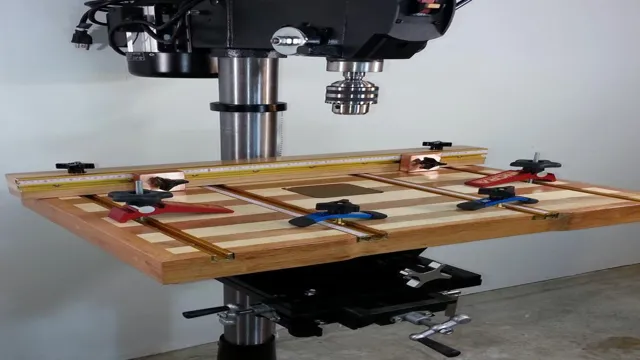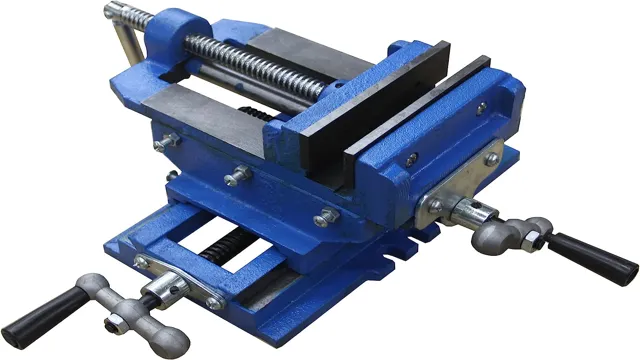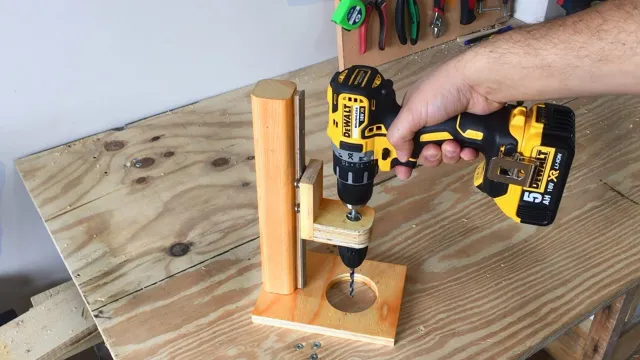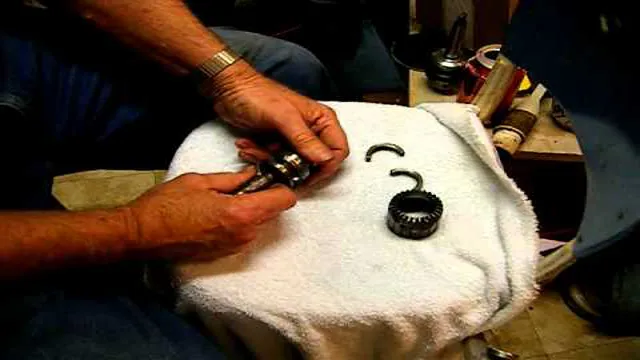How to Fix Drill Press Runout: Tips and Tricks for Precision Drilling
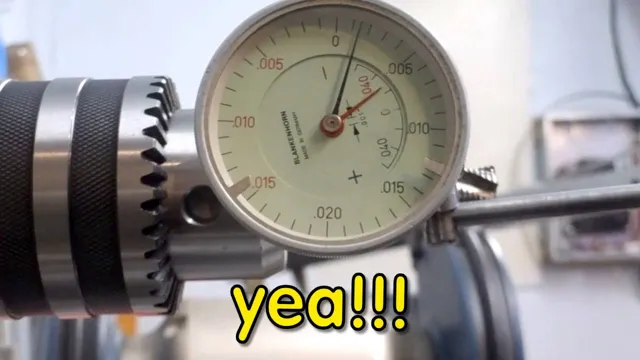
Do you ever face the issue of your drill press wobbling or vibrating when you’re trying to use it? This can be incredibly frustrating and make precise drilling almost impossible. Luckily, there is a solution to this problem – fixing drill press runout! In this step-by-step guide, we’ll walk you through the process of diagnosing and repairing runout in your drill press. By the end of this article, you’ll be equipped with the knowledge and tools to get your drill press running smoothly and efficiently.
So grab your wrench and let’s get fixing!
Understanding Drill Press Runout
If you’re experiencing drill press runout, don’t worry, it’s a common issue. In short, drill press runout refers to the wobbling motion of the drill bit when it’s in motion. This could be caused by a variety of factors, such as the spindle or quill being bent, misaligned, or worn out.
But the good news is that there are a few ways to fix it. One fix is to simply replace the spindle or quill if it’s worn out or damaged beyond repair. Another common solution is to check the chuck and arbor for wear or damage and replace them if necessary.
Additionally, using a high-quality chuck or arbor can help minimize runout. Lastly, lubricating the chuck and arbor can also help reduce friction and minimize runout. By implementing one or more of these solutions, you can effectively reduce or eliminate drill press runout and produce precision drill holes.
Causes of Drill Press Runout
Drill press runout is a common problem that can affect every workshop. It occurs when the drill bit wobbles as it rotates, causing a hole that is larger than the drill bit’s diameter. The primary cause of drill press runout is a lack of alignment between the spindle and quill.
When the spindle and quill are not correctly aligned, the drill will wobble, leading to inaccurate holes. Another reason for runout is worn or damaged bearings in the spindle or quill, causing the drill bit to wobble as it rotates. It can also be caused by insufficient lubrication or contamination of the bearings.
It’s important to keep your drill press well-maintained to prevent runout and ensure accuracy. Check the spindle and quill alignment regularly and keep your drill press clean and lubricated to avoid any potential issues in the future. By taking care of your equipment, you’ll get better results and more efficient work.
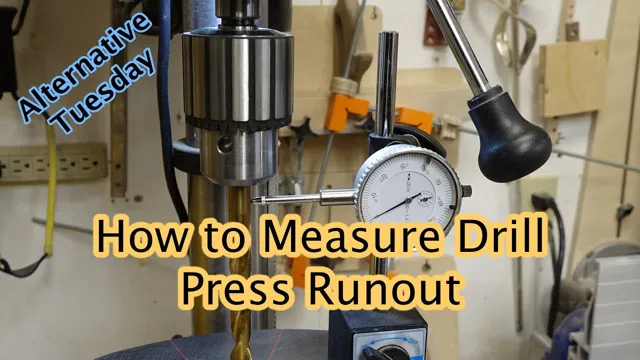
Signs of Drill Press Runout
Drill press runout is a common problem with most drill presses, and it can create issues in drilling precise holes with accuracy. Runout refers to the wobbling of the drill bit or chuck while spinning, leading to uneven and inaccurate drilling. Signs of drill press runout include uneven drill hole depths, chattering or vibrating, swaying, or wobbling of the drill chuck and drill bit.
Understanding drill press runout is crucial in maintaining the drilling precision you require, ensuring smooth and accurate drilling. By identifying the signs of drill press runout and making the necessary adjustments, you can prevent this problem from affecting the quality of your drilling work.
Impact of Runout on Drill Press Performance
As a professional woodworker or hobbyist, having a drill press with accurate and reliable performance is crucial. One factor that can significantly impact the precision and effectiveness of a drill press is the presence of runout. In simple terms, drill press runout refers to the wobbling or deviation of the drill’s rotating chuck during operation.
This can result in inaccurate hole placement and size, reduced feed rate, and ultimately, poor performance. To minimize the impact of runout, it’s imperative to invest in a drill press with low runout and regularly maintain it. By doing so, you can improve the efficiency and quality of your drilling operations, saving time, and producing more precise and consistent results.
Methods for Fixing Drill Press Runout
If you’re experiencing drill press runout, don’t worry – there are methods to fix it. One method is to adjust the quill of your drill press. First check if the quill is loose or bent, and if it is, straighten it or tighten it accordingly.
Next, adjust the quill by placing a dial indicator on the drill press table and then lowering the bit until it touches the indicator. From here, adjust the quill until the runout is at a minimum. Another method is to replace the chuck or collet.
This can be done if the chuck or collet is worn or damaged and is causing the runout. Lastly, try using a high-quality drill bit as another option. A poor quality drill bit can cause runout, so investing in a good one can make a big difference.
With a bit of patience and effort, you can fix your drill press runout and get back to your work with precision and accuracy.
Check and Adjust the Chuck
One of the common issues that drill press users face is runout, which can affect the accuracy and precision of your drilling. Fortunately, there are methods for fixing drill press runout, and one of them is checking and adjusting the chuck. The chuck is the component that holds the drill bit, and if it’s not properly aligned, it can cause runout.
To check the chuck, you can use a dial indicator to measure the runout and determine if it’s within the acceptable range. If it’s not, you can adjust the chuck by loosening the retaining nut and tapping the chuck lightly with a soft mallet until it’s aligned properly. Another way to fix runout is to replace the chuck altogether, especially if it’s worn or damaged.
By taking the time to check and adjust your drill press chuck, you can ensure that your drilling is accurate and precise.
Inspect and Replace the Drill Bit
Fixing drill press runout can be frustrating, but one effective method is inspecting and replacing the drill bit. If your drill bit is worn, damaged, or not properly seated in the chuck, it can cause runout and affect the accuracy of your drilling. To inspect the bit, remove it from the chuck and examine it closely for any visible defects or signs of wear.
If you notice any issues, such as bent or chipped flutes, it’s time to replace the bit. When inserting the new bit, make sure it is seated properly in the chuck and tightened securely. Additionally, it’s important to use the correct type and size of bit for your project to ensure the best results.
By taking the time to inspect and replace your drill bit, you can minimize runout and achieve more precise and accurate drilling.
Maintain and Lubricate the Spindle
When dealing with drill press runout, there are a few methods you can try to fix the issue. Firstly, you should check for any damage or wear and tear on the spindle. If there is any damage, replace the spindle immediately.
Another reason for runout may be that the spindle is not properly lubricated. Regular maintenance and lubrication of the spindle can help reduce runout. Similarly, ensuring that the spindle bearings are well-greased and tight can also help alleviate the issue.
Additionally, checking the chuck for any damage and making sure it is correctly tightened can also help fix runout problems. Keep in mind that drill press runout can also be caused by a bent drill bit or an uneven surface. In these cases, it’s important to replace the bit or find a level working surface.
By following these tips and implementing proper maintenance and lubrication of your drill press, you can reduce runout and keep your equipment running smoothly.
Align and Wipe the Chuck
Drill Press Runout can be a frustrating problem that affects the accuracy of your drilling and can cause damage to your workpiece. However, there are various methods for fixing this issue. One popular technique is to align and wipe the chuck.
This process involves removing the chuck and cleaning the spindle shaft and chuck taper. Then, reassemble the chuck and use a dial indicator to check for runout. If necessary, adjust the chuck until it is perfectly aligned.
Another method is to check and tighten the spindle bearings. If the bearings are worn or loose, they can cause the spindle to move and produce runout. Tightening or replacing the bearings can help fix the issue.
It is important to note that runout can also be caused by dull drill bits or improper drilling techniques. By using sharp bits and proper drilling techniques, you can minimize the risk of runout and prolong the life of your drill press.
Preventive Measures to Reduce Drill Press Runout
Drill press runout can be a frustrating problem to deal with, but there are several preventive measures that can help reduce it. The first step is to ensure that the drill press is properly cleaned and maintained. Over time, dirt and debris can accumulate on the chuck or spindle, causing runout.
Regular cleaning and lubrication can prevent this from happening. Additionally, make sure to use the correct drill bits for the job and select high-quality, precision-made bits. Cheap, low-quality bits are more likely to wobble or bend, leading to runout.
It is also important to secure the workpiece properly to prevent it from vibrating or moving during drilling. This can be accomplished by clamping or using a vise. Finally, check the runout regularly and adjust as needed.
By taking these simple measures, drill press runout can be significantly reduced and drilling can be done more efficiently and accurately.
Regular Inspection and Maintenance
Regular inspection and maintenance are essential for reducing drill press runout. As with any piece of machinery, a drill press undergoes regular wear and tear through frequent use. Even minor issues such as dust buildup or loose parts can lead to accuracy problems and eventually result in runout.
To prevent this, it is crucial to perform preventative measures by checking and tightening all bolts, inspecting the spindle and chuck for any wear and tear, ensuring proper lubrication, and keeping the drill press clean to avoid dust buildup. The drill press should also be leveled, and the table aligned regularly. Performing these simple procedures can help prevent runout and prolong the life of your drill press.
Overall, regular inspection and maintenance will save you time and money in the long run while ensuring a precise drilling experience every time.
Use of High-Quality Drill Bits and Accessories
When it comes to getting the most out of your drill press, using high-quality drill bits and accessories is crucial in reducing runout. Runout refers to the wobbling of the drill bit as it spins, which can lead to imprecise drilling and a shorter lifespan for the bit. By investing in top-notch bits and accessories, you can ensure that your drill press runs smoothly and accurately every time.
Look for bits made from high-speed steel or carbide, which offer durability and precision. Additionally, consider investing in a drill press vise, which will securely hold your workpiece in place, reducing the chances of any movement or error during drilling. Remember, your drill press is only as good as the bits and accessories you use, so don’t skimp on quality if you want the best results.
Conclusion: Keep Your Drill Press in Top Condition
Fixing drill press runout may seem daunting, but with the right tools and techniques, it’s a breeze. First, ensure your chuck is properly tightened and free of debris. Next, check your spindle and bearings for damage or wear.
If all appears good, it’s time to get creative. Using a blend of trial and error, patience, and a bit of luck, shim your drill bit to run true. With a deft touch and attention to detail, you’ll have your drill press running like a top in no time.
Here’s to fixing runout and drilling with precision – happy drilling!”
FAQs
What is drill press runout and how does it affect my workpiece?
Drill press runout refers to the amount of wobbling or deviation of the drill chuck or the spindle from the center axis during rotation. It can affect the precision of your drilling and lead to inaccuracies in your workpiece.
What causes drill press runout?
Drill press runout can be caused by several factors, such as worn-out bearings, misaligned spindle/chuck, loose or bent quill, excessive motor runout, or poorly machined parts.
How can I check the runout on my drill press?
You can check the runout on your drill press by using a dial indicator and a magnetic base. Attach the dial indicator to the chuck or spindle, and position the tip of the dial indicator against a fixed point on the table. Rotate the chuck/spindle and note the maximum runout reading on the dial indicator.
Can I fix drill press runout myself?
Depending on the cause and severity of the drill press runout, you may be able to fix it yourself. This could involve tightening loose parts, replacing worn-out bearings, or realigning the spindle/chuck. However, if the runout is too severe or you’re unsure of the problem, it’s best to seek professional help.
How often should I check the runout on my drill press?
You should check the runout on your drill press at regular intervals, such as every six months or every 100 hours of use. This will help you catch any issues early and maintain the precision of your drilling.
Does a higher priced drill press always mean better runout?
Not necessarily. While a more expensive drill press may have higher-quality components and tighter tolerances, runout can still be an issue if it’s not properly maintained or used correctly. It’s important to do your research and choose a drill press that fits your specific needs and budget.
How can I reduce the risk of drill press runout in the future?
To reduce the risk of drill press runout, you should follow the manufacturer’s guidelines for use and maintenance. This includes keeping the machine clean and lubricated, avoiding overloading the motor, and using properly sharpened and sized bits. Additionally, you should periodically check and adjust the runout as necessary.

